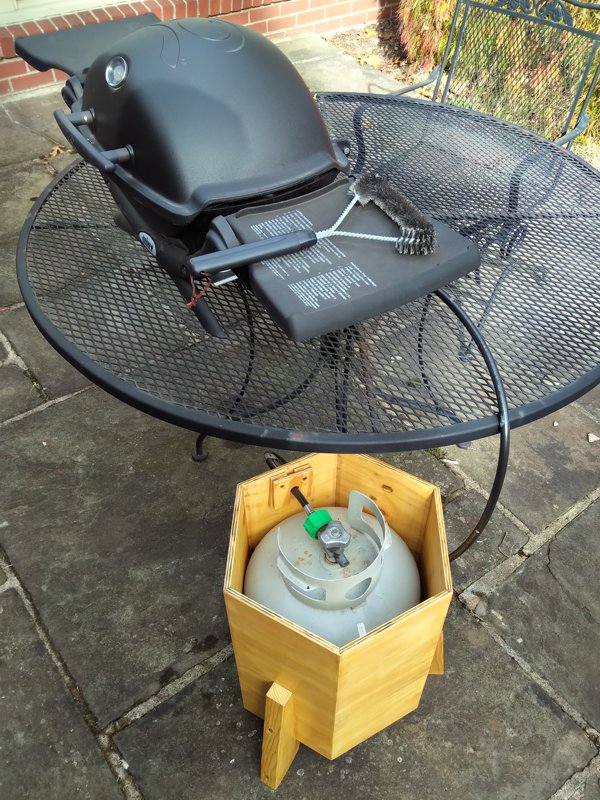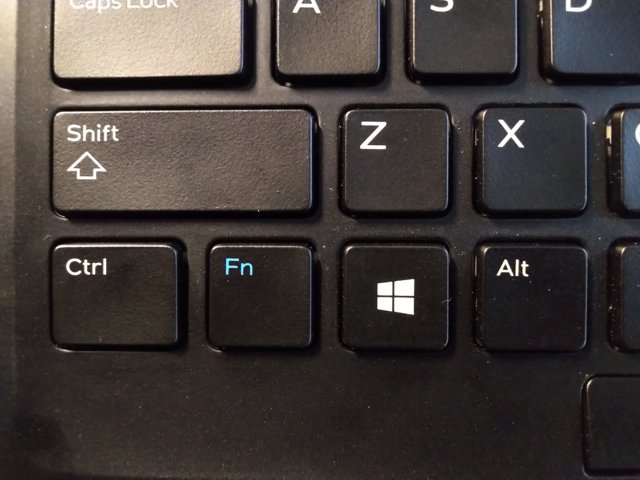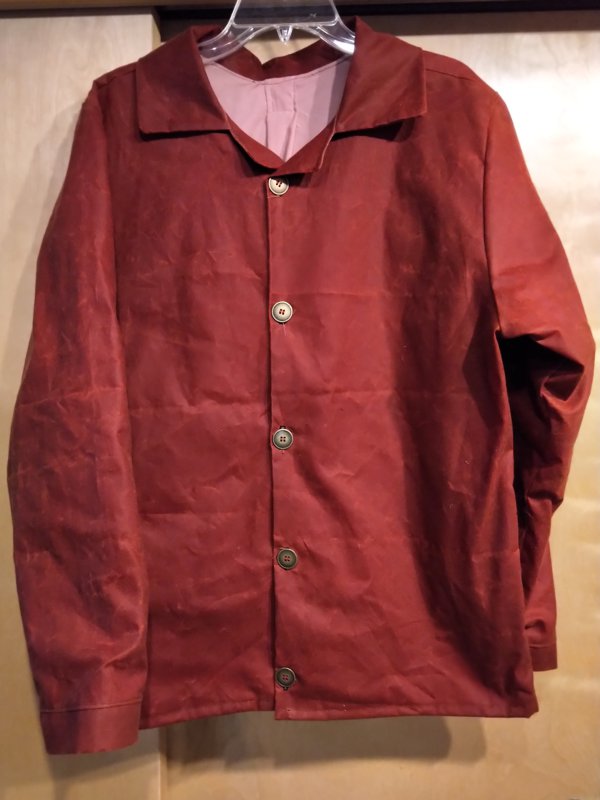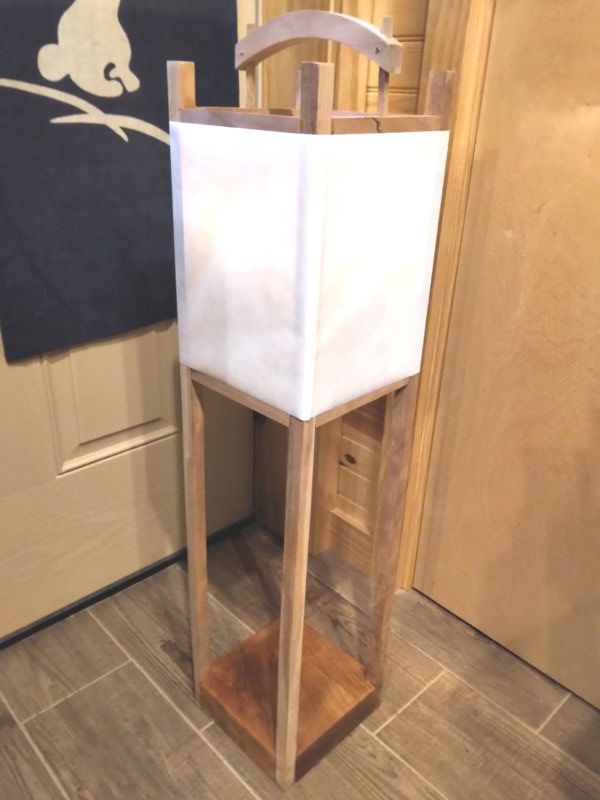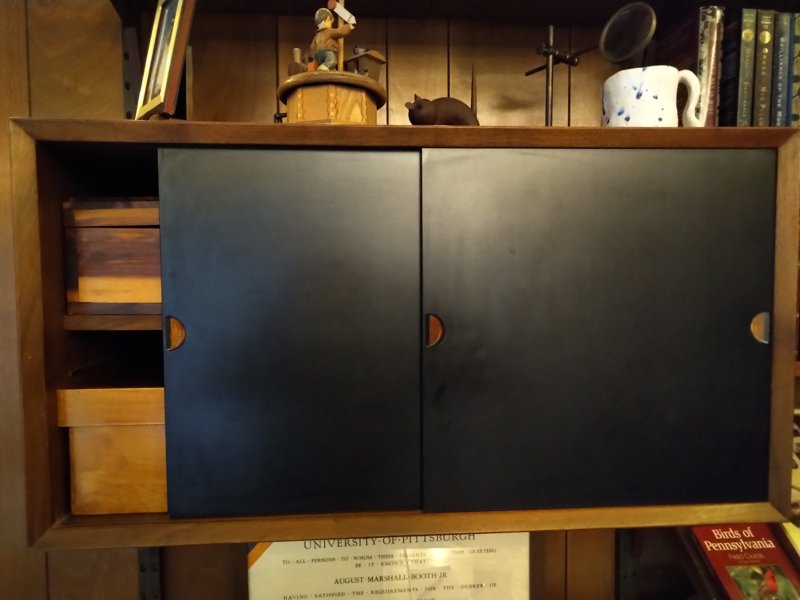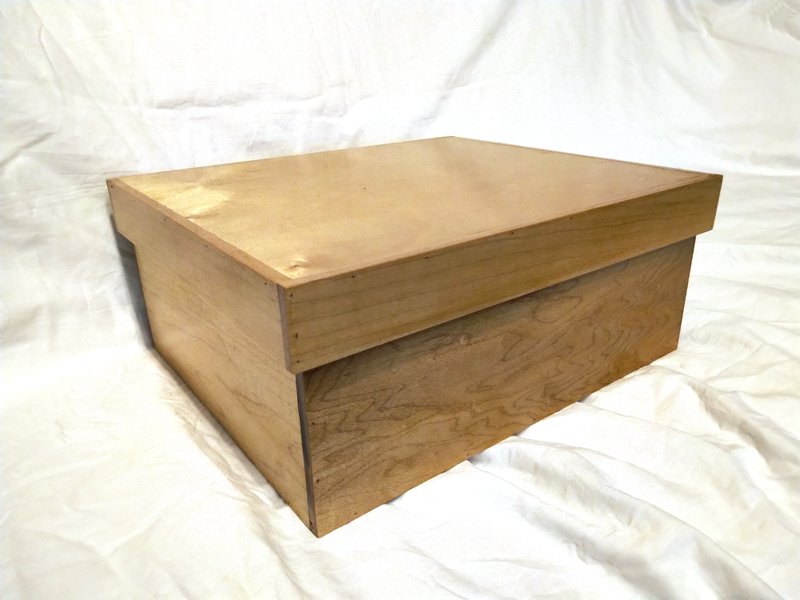We have a small propane-fueled grill that spends all summer out on the patio. Eventually, we decided that it wasn’t super cool to have a tank of propane just sitting out in the rain and sun, so I decided to build a storage box.
The box is mostly made from exterior-grade 3/8″ plywood. It’s hexagonal, which is more work, but actually uses less wood. I’m especially happy that I was able to keep track of all the pieces and their orientation, so the face grain of the plywood flows around the corners nicely.
The floor and lid of the box are 3/4″ plywood for durability. The edges of the lid are made from pine 1-by-4. Once you have the blade angled over to cut the 30 degree angle for the sides, you can use that angle for the lid edges, too. The 3 legs are pieces of 2-by-4 cut into my standard karabitsu leg shape on the band saw.
There is a large hole cut in one side of the box for the propane hose to pass through. A couple of smaller pieces inside block most of the hole and secure it once the tank is in place.
There are also some hols drilled in the bottom to allow any leaked propane to escape. I glued some nylon mesh over the holes to keep bugs from crawling inside.
The whole thing is finished in heavy-duty oil-based polyurethane. I had though about painting the box, but after I saw how interesting the grain was, clear satin it was.
It will also come in handy in the winter. We can clean up the grill itself and store it in the garage, but you really should not bring propane tanks inside like that. With the polyurethane I used, this thing can probably just sit outside on the patio all winter.


